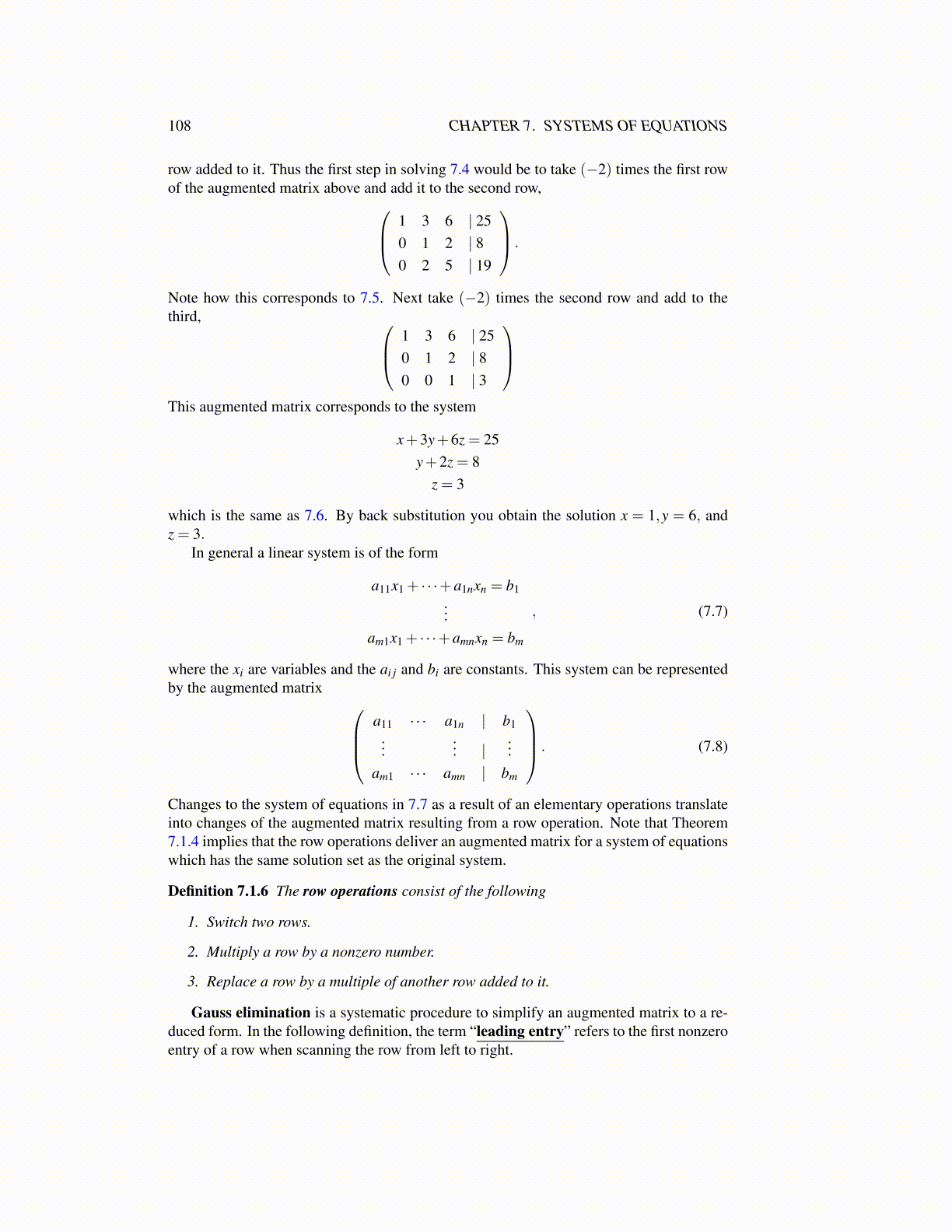
108 CHAPTER 7. SYSTEMS OF EQUATIONS
row added to it. Thus the first step in solving 7.4 would be to take (−2) times the first rowof the augmented matrix above and add it to the second row, 1 3 6 | 25
0 1 2 | 80 2 5 | 19
.
Note how this corresponds to 7.5. Next take (−2) times the second row and add to thethird, 1 3 6 | 25
0 1 2 | 80 0 1 | 3
This augmented matrix corresponds to the system
x+3y+6z = 25y+2z = 8
z = 3
which is the same as 7.6. By back substitution you obtain the solution x = 1,y = 6, andz = 3.
In general a linear system is of the form
a11x1 + · · ·+a1nxn = b1...
am1x1 + · · ·+amnxn = bm
, (7.7)
where the xi are variables and the ai j and bi are constants. This system can be representedby the augmented matrix
a11 · · · a1n | b1...
... |...
am1 · · · amn | bm
. (7.8)
Changes to the system of equations in 7.7 as a result of an elementary operations translateinto changes of the augmented matrix resulting from a row operation. Note that Theorem7.1.4 implies that the row operations deliver an augmented matrix for a system of equationswhich has the same solution set as the original system.
Definition 7.1.6 The row operations consist of the following
1. Switch two rows.
2. Multiply a row by a nonzero number.
3. Replace a row by a multiple of another row added to it.
Gauss elimination is a systematic procedure to simplify an augmented matrix to a re-duced form. In the following definition, the term “leading entry” refers to the first nonzeroentry of a row when scanning the row from left to right.